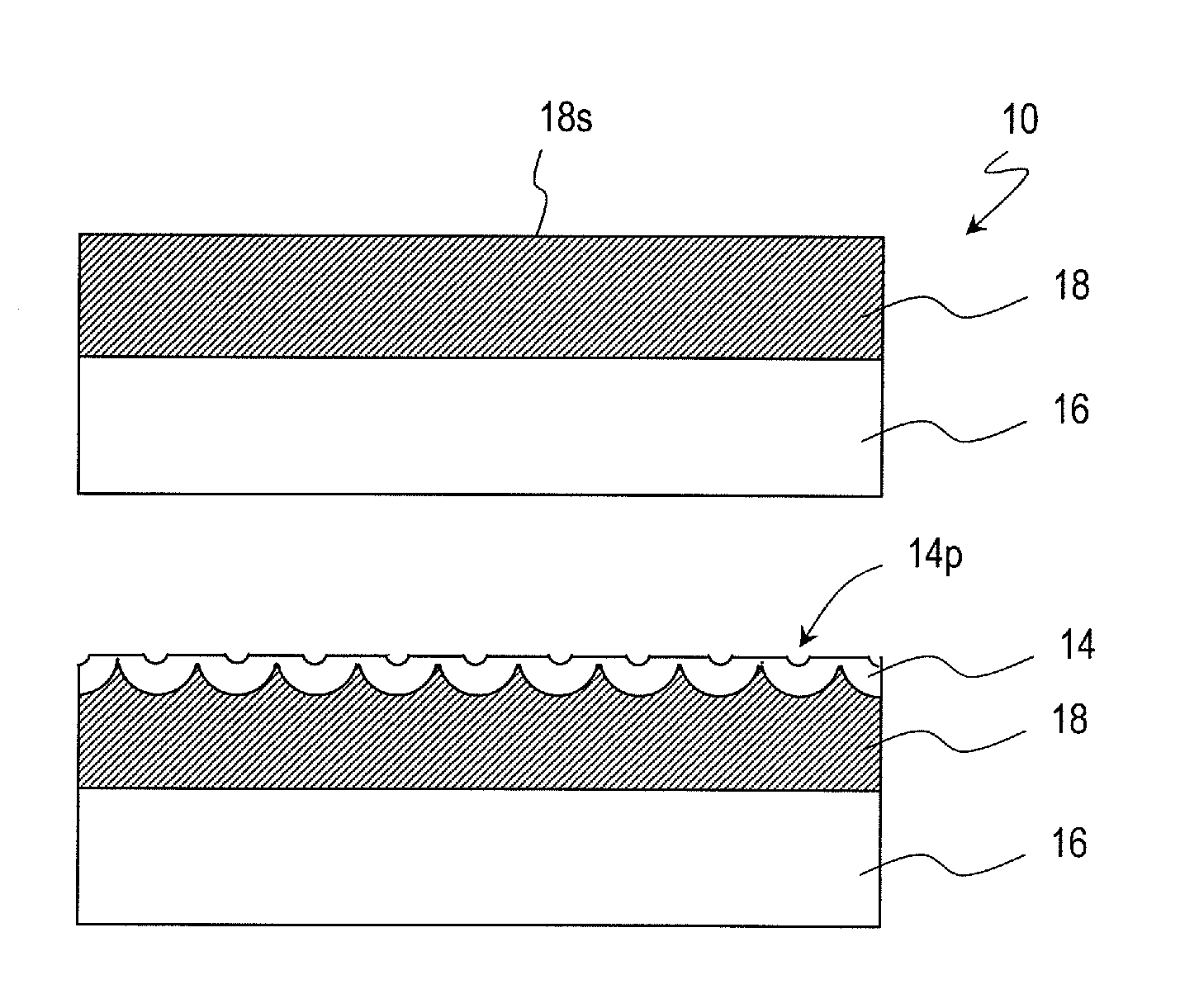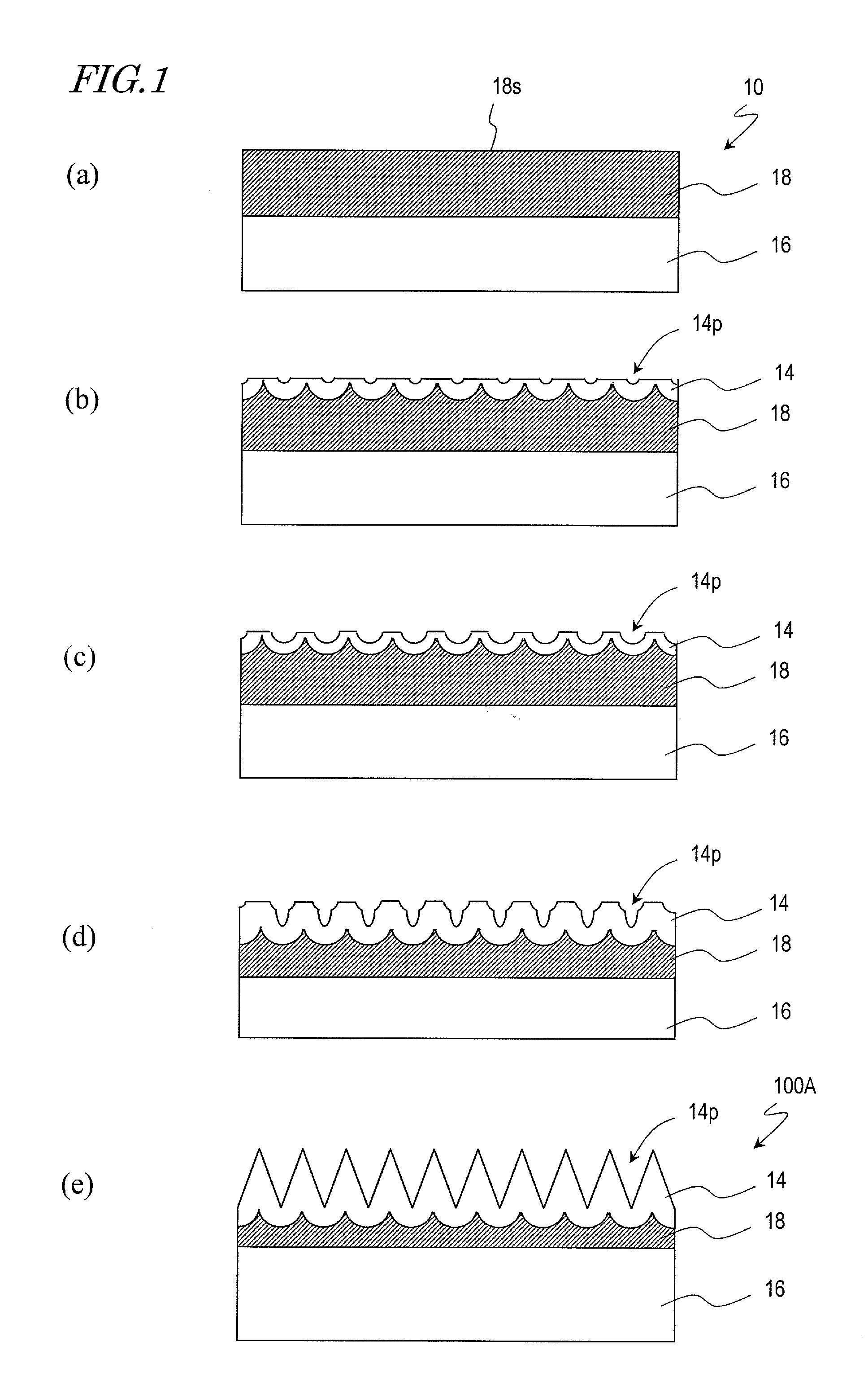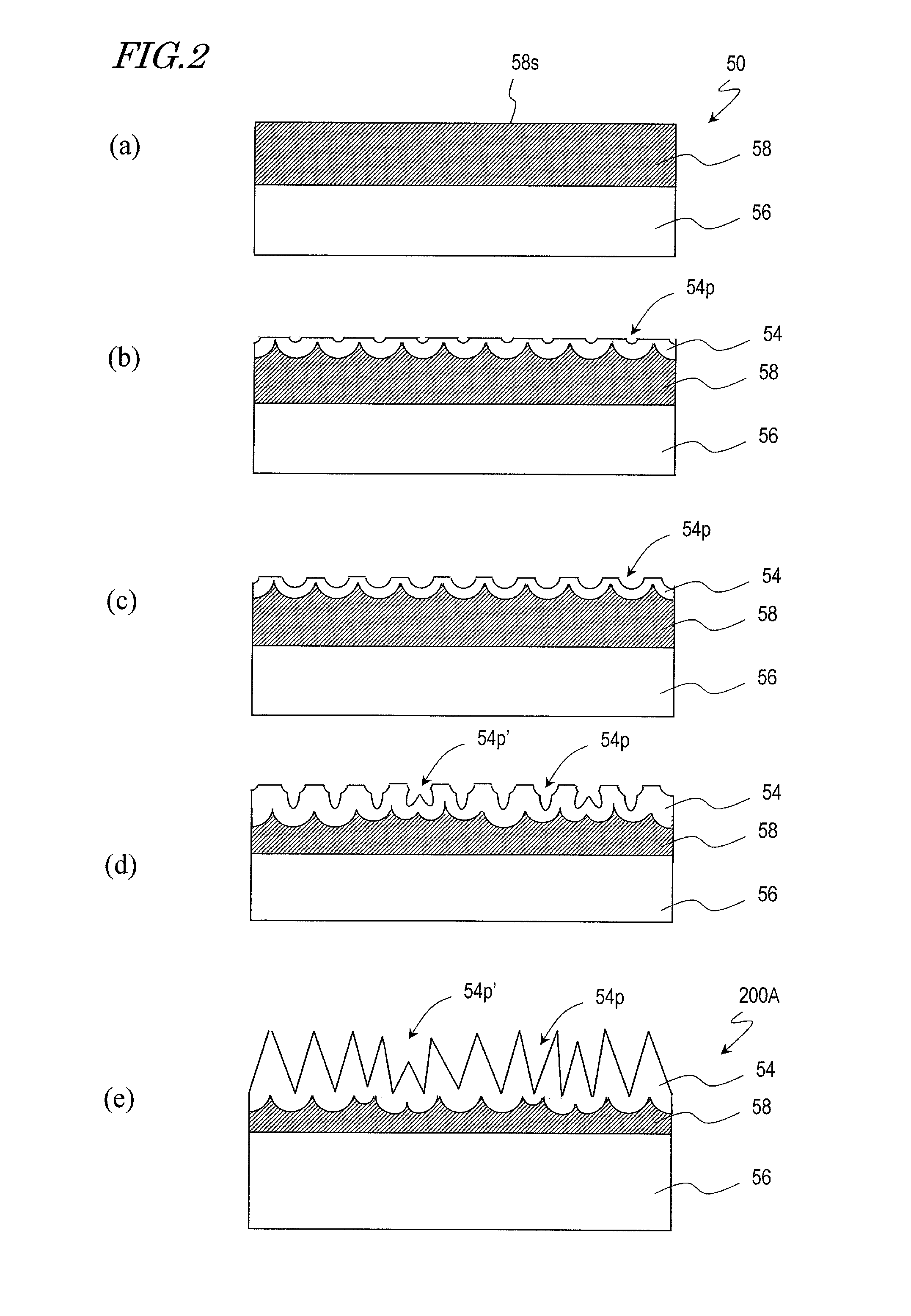Mold and production method for same, and Anti-reflection film
- Summary
- Abstract
- Description
- Claims
- Application Information
AI Technical Summary
Benefits of technology
Problems solved by technology
Method used
Image
Examples
##ventive examples 1 and 2
Inventive Examples 1 and 2, Comparative Example 1
[0087]The moth-eye molds of Inventive Examples 1 and 2 have the same configuration as that of the moth-eye mold 100A shown in FIG. 1(e). The fabrication process which has previously been described with reference to FIGS. 1(a) to 1(e) was performed as described below. Note that the differences between Inventive Examples 1 and 2 were the applied voltage and the duration of the second and subsequent cycles.
[0088]The base 10 (FIG. 1(a)) used herein was prepared by forming a 1 μm thick aluminum film 18 by sputtering on a square glass substrate 16 (0.7 mm thick) of 5 cm on each side. Note that the aluminum film 18 was formed by performing 5 cycles of the step of depositing a 200 nm thick aluminum layer.
[0089]The anodization step and the etching step were alternately performed on the base 10 through 5 cycles (including 5 anodization cycles and 4 etching cycles), whereby the moth-eye mold 100A was fabricated. In each of Inventive Examples 1 a...
PUM
| Property | Measurement | Unit |
|---|---|---|
| Diameter | aaaaa | aaaaa |
| Diameter | aaaaa | aaaaa |
| Size | aaaaa | aaaaa |
Abstract
Description
Claims
Application Information
 Login to View More
Login to View More - R&D
- Intellectual Property
- Life Sciences
- Materials
- Tech Scout
- Unparalleled Data Quality
- Higher Quality Content
- 60% Fewer Hallucinations
Browse by: Latest US Patents, China's latest patents, Technical Efficacy Thesaurus, Application Domain, Technology Topic, Popular Technical Reports.
© 2025 PatSnap. All rights reserved.Legal|Privacy policy|Modern Slavery Act Transparency Statement|Sitemap|About US| Contact US: help@patsnap.com



